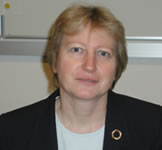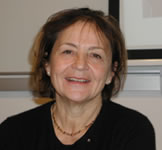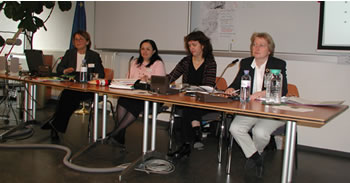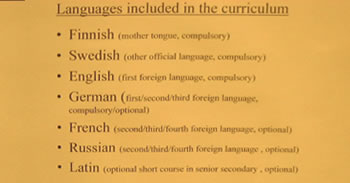 A.2 A.2
Whole-School Language Profiles and Policies
ENSEMBLE
Workshop 14-17 December 2005
Antoinette Camilleri Grima - Co-ordinator
Introduction
The Workshop was held at the ECML. Twenty-two head teachers
from different states participated actively throughout the workshop.
The team consisted of experts from four member states and represented
various areas of relevance: head teachers and their role in the
management of language education across the curriculum (Elisabeth
Fleishmann from Austria); minority languages in education and the
development of languages and teaching material (Madlena Norberg
from Germany); teacher training and research on language in education
(Andrea Young from France and Antoinette Camilleri Grima from Malta).
This was in line with the overall aim of the project: to support
and further promote the idea that all the stakeholders have an important
role in plurilingual education. The sub-title "Ensemble"
in fact denotes the need for the different partners within a school
context (administrators, head teachers, teachers, parents, experts,
etc.) to pull at the same rope, and to do so altogether!
 |
 |
| Antoinette Camilleri Grima |
|
|
 |
 |
|
|
The aims of the Workshop were happily achieved. This was
successfully managed by alternating plenary presentations with group
work, by involving participants in activities like poster presentations,
"show and tell", and drama sessions. The Workshop
also included presentations by the team focusing on case studies
that served as real life examples of how to implement plurilingual
education in diverse ways. Each presentation was followed
by group work which gave participants the opportunity to develop
tools for use in schools, such as examples of processes and products
for plurilingual education, examples of staff development activities,
plans for managing whole school projects and material development.
Dissemination of the Guide
One of the main aims of the Workshop was to disseminate the Guide
among head teachers. The co-ordinating team firmly believes
that head teachers are key people in the implementation of language
innovation. Being in the know-how, they can contribute by
stimulating change, taking the initiative themselves.
Each participant was given a copy of the Guide, and on
the first morning the team made a panel presentation about it.
At various points during the Workshop reference was made to specific
sections or pages. For example, each of the case studies presented
by the team members was linked to one or more ideas in the Guide.
The aim of these case studies, that were prepared in advance and
distributed to the participants, was, in fact, to illustrate how
the "theoretical" ideas presented in the Guide
were being put into practice in real life.
 |
| |
For example, Andrea Young explained how a multicultural primary
school in Didenheim, France, took the initiative to invite parents
to the school to share their various languages and cultures with
the children. This was a very successful way of valuing all
languages, and of promoting respect among the children. Madlena
Norberg described the implementation of Sorbian immersion education,
a minority language in a majority environment. She gave an
account of the decisions involved, the preparation needed both in
linguistic and pedagogic terms, and the role of applied linguistics
in the development of material for using a minority language across
the curriculum. Elisabeth Fleischmann gave a head teacher"s
perspective on the management of curricular innovation. She
also showed participants around her bilingual school in Graz which
certainly gave life to theory. Antoinette Camilleri Grima
focused on the importance of teacher preparation and "inside
the school" staff development.
 |
| An original group work report |
|
Towards the end of the Workshop participants were given a further
opportunity to examine specific sections of the Guide.
The results of this session were presented as drama simulations
by the participants in four groups. This was a very enjoyable,
and yet effective way of communicating the very basic ideas of plurilingual
education as expressed in the Guide.
 |
| Watering language flowers |
|
The team took the opportunity to hold a "cultural evening"
during which a quiz was organised, stimulating further reflection
about plurilingualism and intercultural competence. The cultural
evening turned out to be one of the most successful parts of the
workshop not only because participants shared food and customs,
but also because it helped to break the ice completely and to help
them form networks in view of the post-workshop development.
Participants" Contribution
i. Poster Presentations
Each participant was asked to bring a poster to the workshop describing
their school, and focusing on one of the Workshop themes. On the
first afternoon of the Workshop the participants presented their
posters and there was an interactive session to summarize the information
which was presented in plenary at the end of the day.
ii. Show and Tell
An encouraging number of participants gave "show and tell"
sessions which were run in two parallel sessions. Ten presentations
were made in all, and most of them consisted of power-point and
video presentations. They also focused on one or more of the
workshop themes such as staff development, bilingual education,
material development, and valuing all languages.
 |
| Diversifying the language curriculum |
|
iii. Group Work
Group work was held in relation to each of the case studies presented
by the team members as a way of helping participants air their views,
further reflect about the topics, and produce more refined tools
for potential use in other schools.
Conclusion
The benefits reaped from this Workshop can be summarised in the
following way:
- This workshop served the important purpose of disseminating
Council of Europe language policies. The participants were
all first-time visitors to the ECML and they expressed their appreciation
of the Centre"s contribution to language education.
This workshop helped them to obtain more information about modern
trends in the philosophy of language education, which were made
available to them in the form of Council of Europe publications,
and other material found in the ECML library.
- The project succeeded, through the workshop, to develop and
make available a number of examples of good practice in plurilingual
education and the promotion of plurilingualism. These were
provided both by team members and by participants in the shape
of case studies, and were also presented during the posters session
and the "show and tell". The opportunity to
"show and tell" in plenary and in group work created
a great sense of "belonging" to a new generation of
language educators and was very motivating for head teachers who
might have felt that they were working in isolation.
- The workshop gave life to two successful network projects.
In one project four countries were involved: Spain, Romania, Croatia
and Malta. Students in the respective schools worked hard
to prepare presentations on their own cultures that could be shared
with their counterparts. The Maltese and Spanish students
will also be visiting each other in 2007. The second network,
between Austria and Slovenia succeeded in bringing together two
groups of students who spent a day at each other"s school
and town, and carried out a number of interesting intercultural
activities.
- As a result of the project, and of the workshop in particular,
a number of tools have been developed with the aim of facilitating
and fostering plurilingualism and plurilingual education in as
many schools as possible.
Finally, the general feeling was that it would be worthwhile to
offer as many head teachers as possible the same opportunity of
participating in similar workshops in the future. |